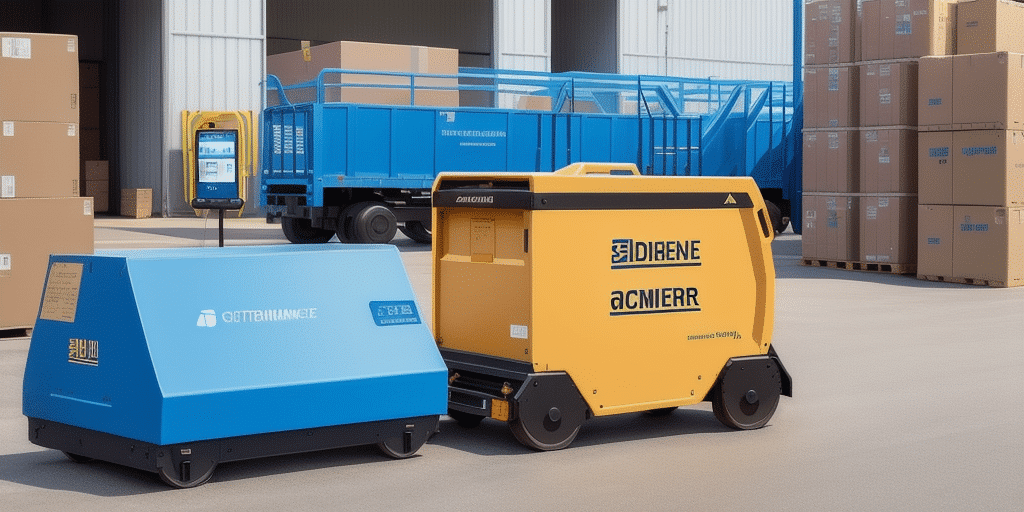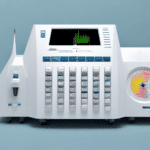Technical Product Overview of the DIM Weight Compliance Software Volume Analyzer for E-Commerce Shippers
As e-commerce continues to expand rapidly, ensuring regulatory compliance with shipping practices has become crucial for shippers. One significant regulation is the dimensional weight (DIM weight) pricing model, which has gained prominence in recent years. To assist e-commerce shippers in adhering to these regulations and optimizing their shipping operations, the DIM Weight Compliance Software Volume Analyzer has been developed. This article provides a comprehensive technical overview of this advanced volume analyzer tool.
Understanding the Importance of DIM Weight Compliance
Regulatory Compliance and Cost Management
The DIM weight pricing model calculates shipping costs based on both the size and weight of a package. This approach allows shipping carriers to charge more accurately based on the actual space a package occupies in their vehicles. According to the FedEx Dimensional Weight Guidelines, non-compliance with DIM weight regulations can result in substantial fines and unexpected shipping costs for e-commerce businesses, adversely affecting their profitability.
Enhancing Customer Satisfaction and Sales
DIM weight compliance goes beyond avoiding penalties; it also contributes to improved customer satisfaction. Accurate shipping cost calculations enable shippers to offer competitive pricing, which can lead to increased sales and customer loyalty. A study by Business Insider highlights that transparent and fair shipping costs are a significant factor in consumer purchasing decisions online.
Environmental Impact and Sustainability
Compliance with DIM weight regulations also promotes environmental sustainability. By optimizing package dimensions and reducing the number of shipments required, carriers can enhance vehicle load efficiency, leading to fewer trips and lower carbon emissions. The Environmental Protection Agency notes that optimized shipping operations contribute significantly to reducing the carbon footprint of delivery services.
Functionality of the Volume Analyzer
Advanced Measurement Technology
The Volume Analyzer employs cutting-edge laser scanning technology to precisely measure package dimensions alongside weight. This dual measurement ensures accurate DIM weight calculations and corresponding shipping costs. According to ISO Standards, precise measurement tools are essential for maintaining consistency and compliance in shipping operations.
Data Integration and Operational Optimization
Beyond regulatory compliance, the Volume Analyzer provides valuable data insights into shipping patterns. By analyzing package size and weight trends, shippers can identify potential cost-saving opportunities and enhance overall shipping efficiency. Integration with other shipping software and platforms, such as Shopify and WooCommerce, allows for seamless data synchronization and streamlined shipping processes.
Key Features of the DIM Weight Compliance Software Volume Analyzer
- **Advanced Laser Scanning Technology**: Ensures highly accurate package measurements.
- **Real-Time DIM Weight Calculation**: Provides immediate shipping cost estimates based on measured dimensions and weight.
- **User-Friendly Interface**: Offers an intuitive dashboard for easy navigation and operation.
- **Customizable Settings**: Allows for the adjustment of package size and weight thresholds to meet specific business needs.
- **Broad Compatibility**: Supports integration with a wide range of shipping carriers and e-commerce platforms.
Additional Features
- **Automated Reporting and Analytics**: Generates comprehensive reports to identify areas for improvement in shipping processes.
- **Seamless E-Commerce Integration**: Connects effortlessly with platforms like Shopify and WooCommerce for efficient order fulfillment and shipping management.
These features collectively provide a robust solution for e-commerce shippers aiming to enhance their shipping operations and maintain compliance with DIM weight regulations.
Benefits of Implementing the Volume Analyzer in E-Commerce Shipping
Cost Savings and Financial Efficiency
Utilizing the Volume Analyzer helps businesses avoid unexpected shipping fees and penalties by ensuring compliance with DIM weight regulations. Additionally, by optimizing package sizes and weights, companies can significantly reduce shipping costs. For instance, a clothing retailer reported a 25% reduction in shipping costs after implementing the tool.
Environmental Sustainability
Optimizing package dimensions leads to fewer shipments and reduced fuel consumption, contributing to a lower carbon footprint. The United Nations Sustainable Development Goals emphasize the importance of sustainable practices in business operations, making the Volume Analyzer a valuable tool for environmentally conscious companies.
Enhanced Operational Efficiency
The Volume Analyzer streamlines shipping operations by providing accurate measurements and real-time data analysis. This efficiency translates to faster shipping times, reduced errors, and improved overall workflow. Businesses can leverage these improvements to enhance customer satisfaction and loyalty.
Implementing the Volume Analyzer in Your E-Commerce Business
Step-by-Step Implementation Process
- Assess Business Needs: Determine specific requirements such as package size and weight thresholds.
- Integrate with Existing Systems: Connect the Volume Analyzer with current shipping platforms or carriers.
- Configure Settings: Customize the tool according to business preferences and regulatory standards.
- Training and Onboarding: Ensure that staff are trained to effectively use the tool.
- Monitor and Optimize: Continuously analyze shipping data to identify further optimization opportunities.
Best Practices for Optimization
To maximize the benefits of the Volume Analyzer, businesses should regularly review shipping data, adjust settings based on evolving needs, and stay informed about changes in shipping regulations. This proactive approach ensures sustained efficiency and compliance.
Customer Success Stories
- Clothing Retailer: Achieved a 25% reduction in shipping costs by optimizing package sizes using the Volume Analyzer.
- Electronics Store: Improved delivery times and reduced customer complaints by identifying regional shipping trends and adjusting strategies accordingly.
- Beauty Products Supplier: Increased overall efficiency and profitability through seamless integration with their existing shipping platform, enabling real-time updates and analysis.
These success stories demonstrate the tangible benefits of implementing the DIM Weight Compliance Software Volume Analyzer, showcasing its ability to drive cost savings, enhance operational efficiency, and improve customer satisfaction across diverse e-commerce sectors.
Conclusion
The DIM Weight Compliance Software Volume Analyzer stands out as a vital tool for e-commerce shippers striving to maintain regulatory compliance and optimize their shipping operations. By leveraging advanced measurement technology, providing actionable data insights, and integrating seamlessly with existing systems, the Volume Analyzer offers a comprehensive solution that addresses both financial and operational challenges. In an increasingly competitive e-commerce landscape, adopting such innovative tools is essential for achieving sustainable growth and maintaining a competitive edge.




















